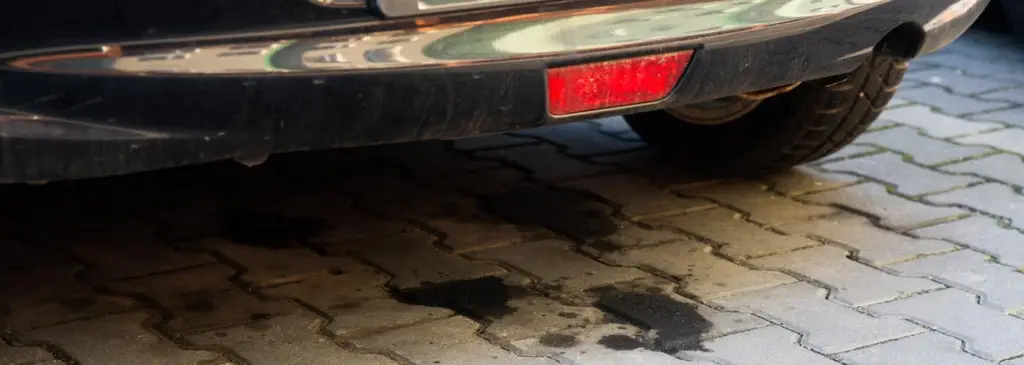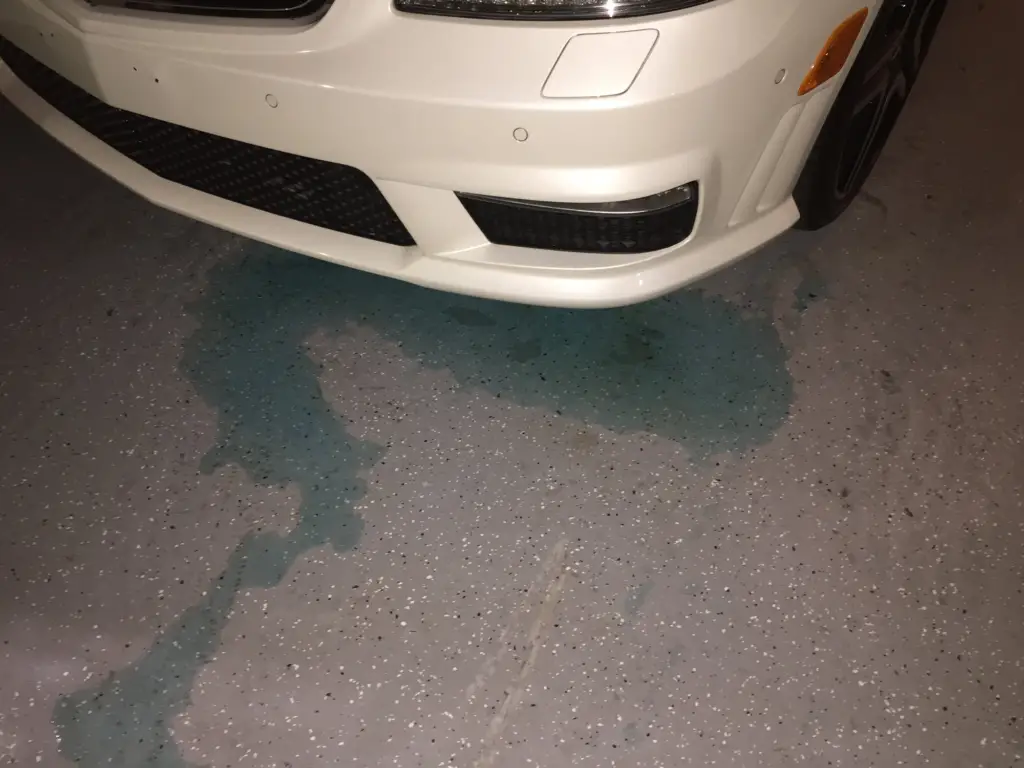Before you start driving, you notice that water is leaking from behind the passenger tire. Is it dangerous? Actually, you need to check and verify the exact type of fluid that is leaking before you go on to diagnose. There are different reasons why water might leak from behind the passenger tire.
Water leaking from behind the passenger tire normally happens due to condensation from the air conditioning system or the exhaust. This is the case if the water is clear and odorless. But if it is slightly orange or yellow then it is a coolant leak. Now, you are in for a serious issue. Because it means problems in the components like the heater core, water pump, and more. A bluish water leak means windshield wiper fluid is leaking.
Once, you successfully diagnose, it is possible to carry on with the problem. So, to get into the details, let’s get started.
Why Is Water Leaking from Behind Passenger Tire?
The table below gives a quick overview of the reasons for water leaking behind the passenger tire. Don’t worry it has got nothing to do with tire size fitting.
| Reason | Fluid Color | Solutions |
| AC Condensation | No Color | Use the HeaterRegularly Clean the Rain Tray |
| Blown Windshield Wiper Fluid Reservoir | Blue | Replace the Windshield Wiper Fluid Reservoir |
| Leaking Heater Core | Yellow or Orange | Replace the Heater Core |
| Leaker Rubber Hoses | Yellow or Orange | Replace the Rubber Hoses |
| Defective Heating Control Valve | Yellow or Orange | Replace the Heating Control Valve |
| Malfunctioning Water Pump | Yellow or Orange | Replace the Water Pump |
| Cracked Coolant Split Pipe | Yellow or Orange | Replace the Coolant Split Pipe |
| Damaged Radiator | Yellow or Orange | Replace the Radiator |
| Malfunctioning Coolant Reservoir | Yellow or Orange | Replace the Coolant Reservoir |
From the table above, you can find the common reasons why water might leak from the passenger tire and the methods to solve it.
Water Leaking From Behind the Passenger Tire? Quick Fix!

Start by grabbing a piece of paper and putting it around the dripping water from your car. Check the color of your paper. This is important and the decision you make depends on this color.
If there is no color, then it is just water dropping from the AC condensation, so there’s nothing to fear. But if it is blue or yellow or orange then you need to solve the problem immediately.
Leaking Fluid is Watery and Does Not Smell:
If the water is leaking, chances are high that it is just your AC condensation. It’s completely normal and nothing to worry about. But you still need to follow a few precautionary steps.
Reason 01: AC Condensation
When it comes to water leakage from behind the passenger tire, one possible cause is a clogged air conditioning system drain. While the A/C system’s primary function is to blow cool air, it also plays a role in removing heat from the cabin and collecting humidity.
Typically, condensation drips out of the car onto the road. However, if the A/C evaporator drain becomes clogged, water can accumulate behind the dashboard and eventually leak into the front footwells.
Normally, you don’t need to worry. But if the evaporator drain becomes clogged or if you are getting leakage during winter then you should take steps.
Use the Heater
It’s worth noting that even in winter, the AC system can produce condensation, especially when the heater is set to “defrost.” This mode utilizes the AC system to remove moisture from the air, causing water to drip.
Yes, during winter you need to keep track of your tires so that it does not go flat. But frankly, running the AC during freezing temperatures is unnecessary since the outside air is already colder than what the AC can achieve.
In these conditions, the heater raises the air temperature, lowering its relative humidity and providing drying and defrosting properties. Adjusting the heat to a lower setting reduces the need for defrosting. This way you can void having leakages during winter.
Regularly Clean the Rain Tray
Evaporator drain or the rain tray gets clogged through dirt accumulation. Regularly keep the drain clean and this will help you to avoid any kind of clogging.
Leaking Fluid is Blue:

If you find out on the paper that the leaking fluid is blue then it is the windshield wiper fluid. This is used to keep the windshield wiper clean.
Reason 01: Blown Windshield Wiper Fluid Reservoir
Windshield wiper fluid is present in a reservoir. When water accidentally enters this reservoir, it freezes over. This causes the reservoir to crack and leads to fluid leaking. It is normally blue but sometimes light green.
Replace the Windshield Wiper Fluid Reservoir
When the windshield wiper fluid has cracked, it means that it is time to change. If you are comfortable with DIY work, changing the windshield wiper fluid reservoir is easy.
Just grab the tools like wrenches, screwdrivers and cutters. Remove the bolts and required connection. Next, take out the washer fluid line and then replace the reservoir. Plug in the harness and install new fluid line.
Leaking Fluid is Orange or Yellow:
If the leaking fluid is orange or yellow then it is a coolant leak. This is when you need to take immediate action. It means one of the internal components is damaged and your car’s coolant is leaking. Without coolant, the engine’s performance will decline.
Reason 01: Leaking Heater Core
Heater cores can leak due to reasons such as corrosion, age, faulty thermostat. In fact, even a contaminated coolant will cause the heater core to malfunction.
Replace the Heater Core
Just replace the heater core to stop the coolant leak. Make sure to disconnect the battery and drain the cooling system first. Then you can remove the heater core.
This How to replace heater core in a car or truck is a good resource to help you replace the heater core.
Reason 02: Leaking Rubber Hoses
Inside your car, there are rubber hoses connecting the engine to the radiator or heater core. If that rubber hose is damaged then the coolant will leak out.
Replace the Coolant or Radiator Hose
To stop coolant leakage, replace the coolant or radiator hose. But before you try to replace it, make sure that the car has cooled down. Then drain out the coolant. Finally, you can remove the hose.
Reason 03: Defective Heating Control Valve
Over time, the heater control valve may experience coolant leaks caused by wear and tear or extensive corrosion. Both of these result from contact with old or contaminated engine coolant. To rectify the leakage issue, it is necessary to replace the faulty control valve with a new one.
This replacement is essential for effectively repairing the coolant leak and ensuring the proper functioning of the vehicle’s heating system.
Replace the Heating Control Valve
Just replace the heating control valve to stop coolant leaking. This BMW Heater Problems? How to: Replace your Heater Control Valve is a good visual guide to help you.
Reason 04: Damaged Radiator
Through long-term use, radiators can get damaged from wear and tear or excessive corrosion. Either way, the direct impact is coolant leakage along with other major threats to the engine. Do not drive with a damaged radiator!
Replace the Radiator
Replace the radiator as soon as possible to stop the coolant leak. This How to Replace a Radiator in Your Car is a good resource to help you replace the radiator.
Reason 05: Malfunctioning Coolant Reservoir
When the coolant reservoir gets damaged or develops any crack then the coolant will leak. So, it is important to get it replaced as soon as possible.
Replace the Coolant Reservoir
Replace the coolant reservoir to fix this problem. Follow this How To Replace Coolant Reservoir 2009-2020 Dodge Journey video to get into the details of the steps.
Along with these, coolant leaks can happen for cracked coolant split pipes and malfunctioning water pumps. To stop coolant leaking, just replace them.
Frequently Asked Questions (FAQs):
Is It Safe to Drive if Water is Leaking from Behind the Passenger Tire?
Yes, if the water is leaking from behind the passenger tire, it is safe to drive. As long as it is the AC condensation. But if the leakage is from coolant then it is not safe to drive. Get your car to a repair station and get it fixed as soon as possible. Because a coolant leak can lead to potential damage to your car’s engine.
Can Brake Fluid Leak Out from Behind the Passenger Tire?
No, brake fluid does not normally leak out from behind the passenger tire. If you find any instance of leakage then it is most probably from the air conditioner condensation, rainwater, or coolant leak. But if your suspect any brake fluid leakage, then it is always a good idea to check the brake fluid level.
Can Engine Oil Leak Out from Behind the Passenger Tire?
No, engine oil can not leak out from behind the passenger tire. If there is any engine oil leak then you should check at the front of the engine. Because it happens due to a problem in the oil filter, pump, or pan gasket. If you suspect any oil leak then trace the oil to its source, and check the oil filter and other components. Then verify if there is any leakage or not.
Conclusion
In conclusion, you can easily diagnose water leaking from behind the passenger tire. Make sure of the exact source and solve the problem. Keep in mind that, regular maintenance and prompt action will keep your vehicle dry. It will also minimize the risk of further issues. Stay proactive and prioritize resolving any water leakage concerns to keep your vehicle in optimal condition.
